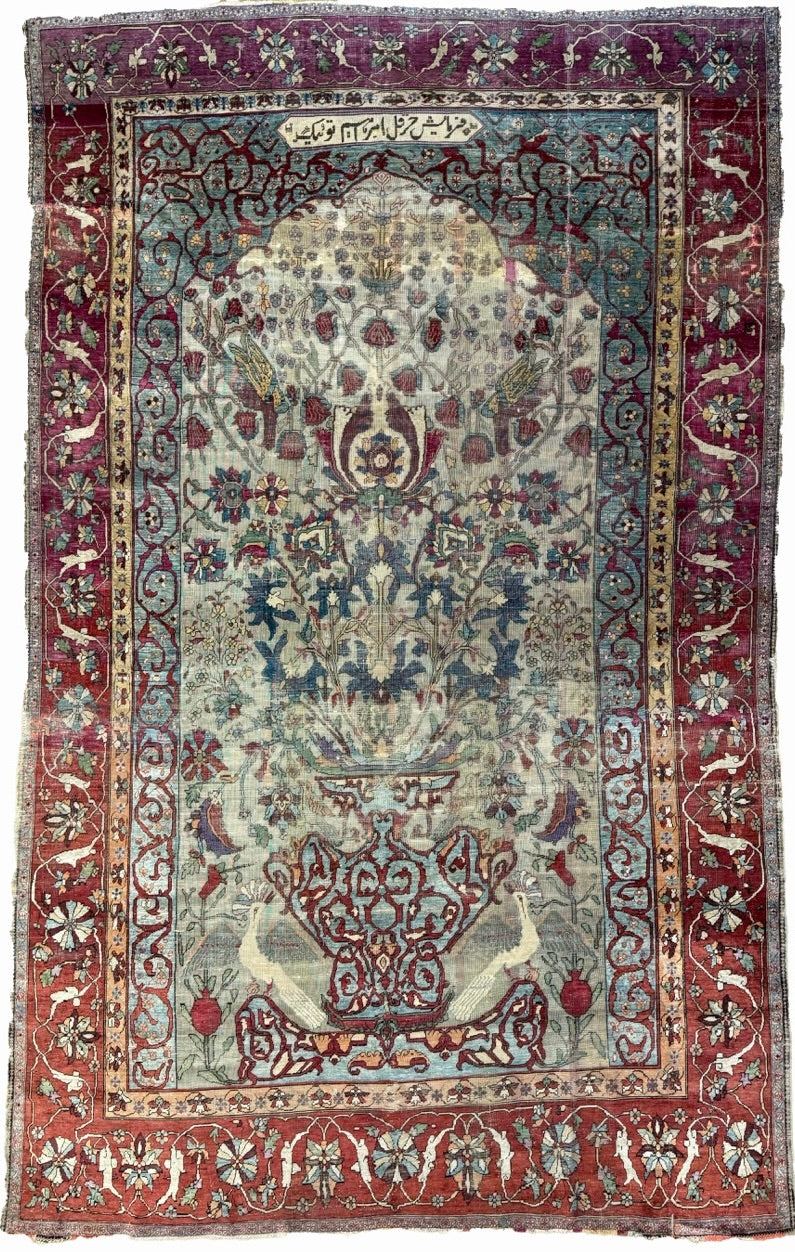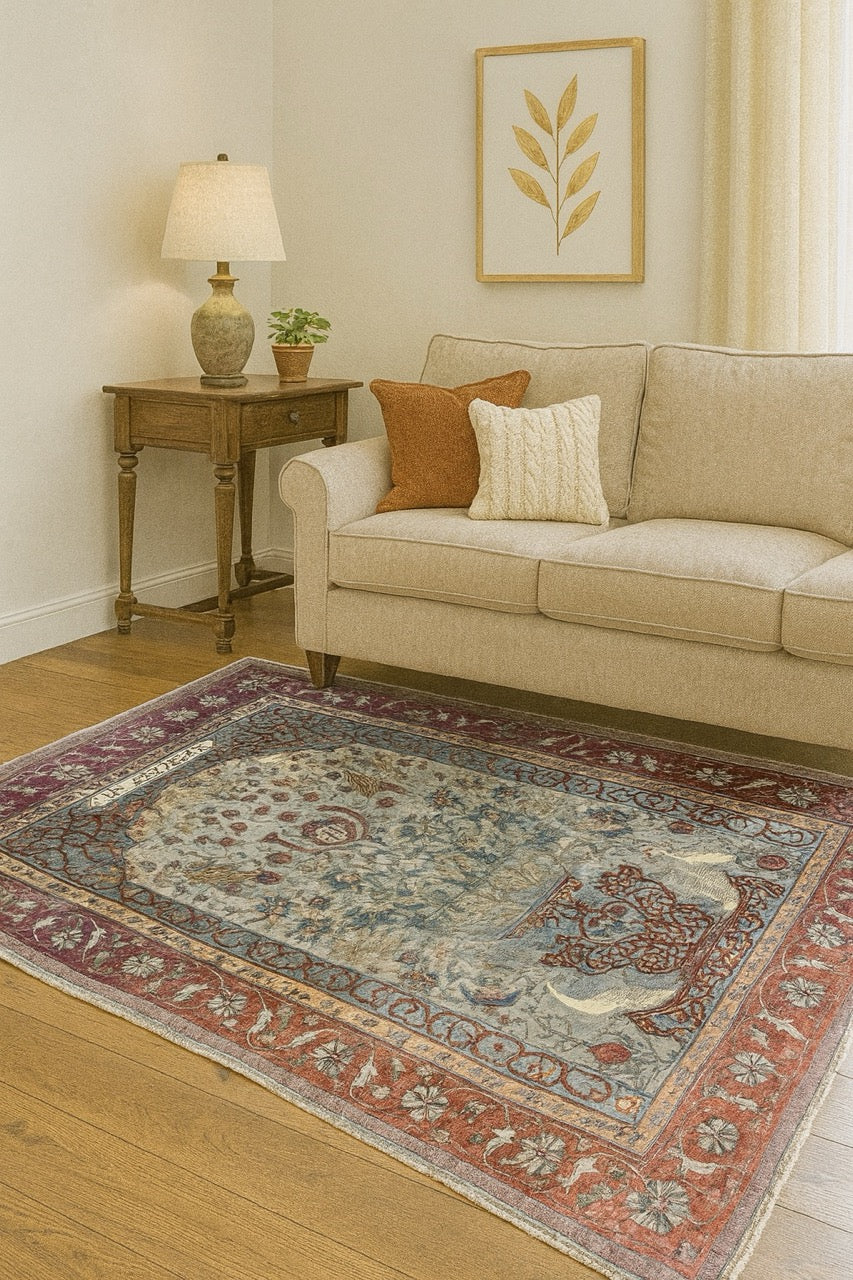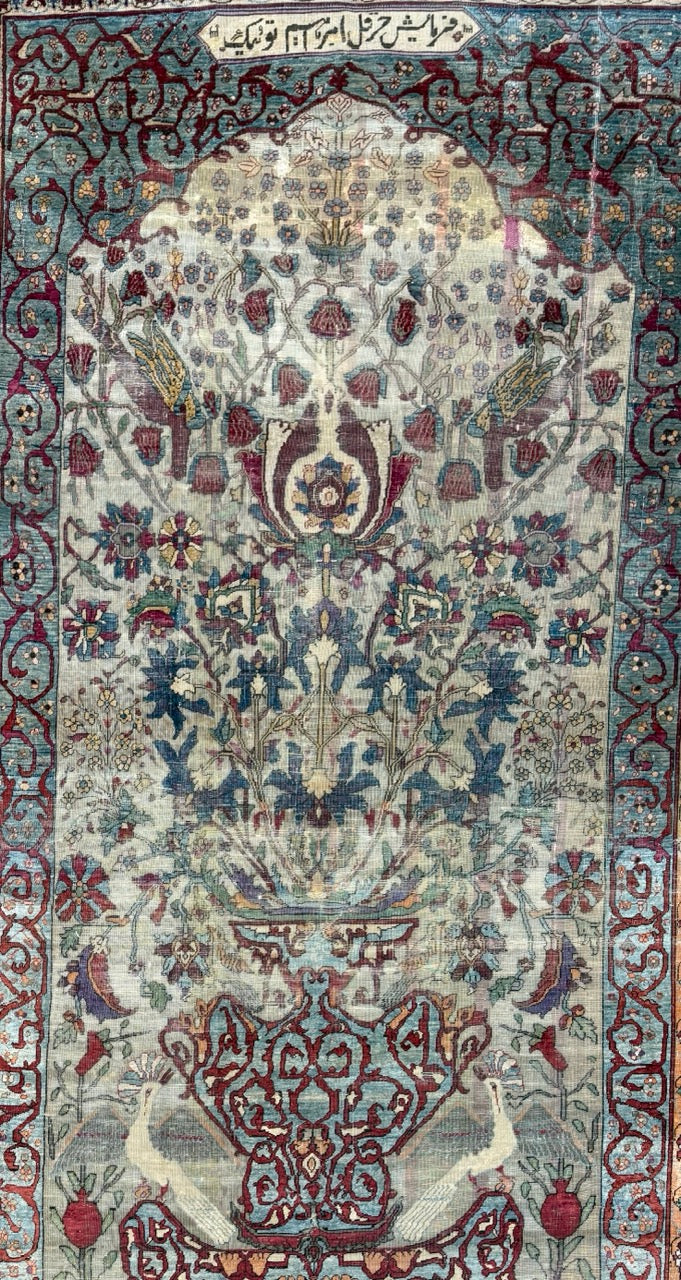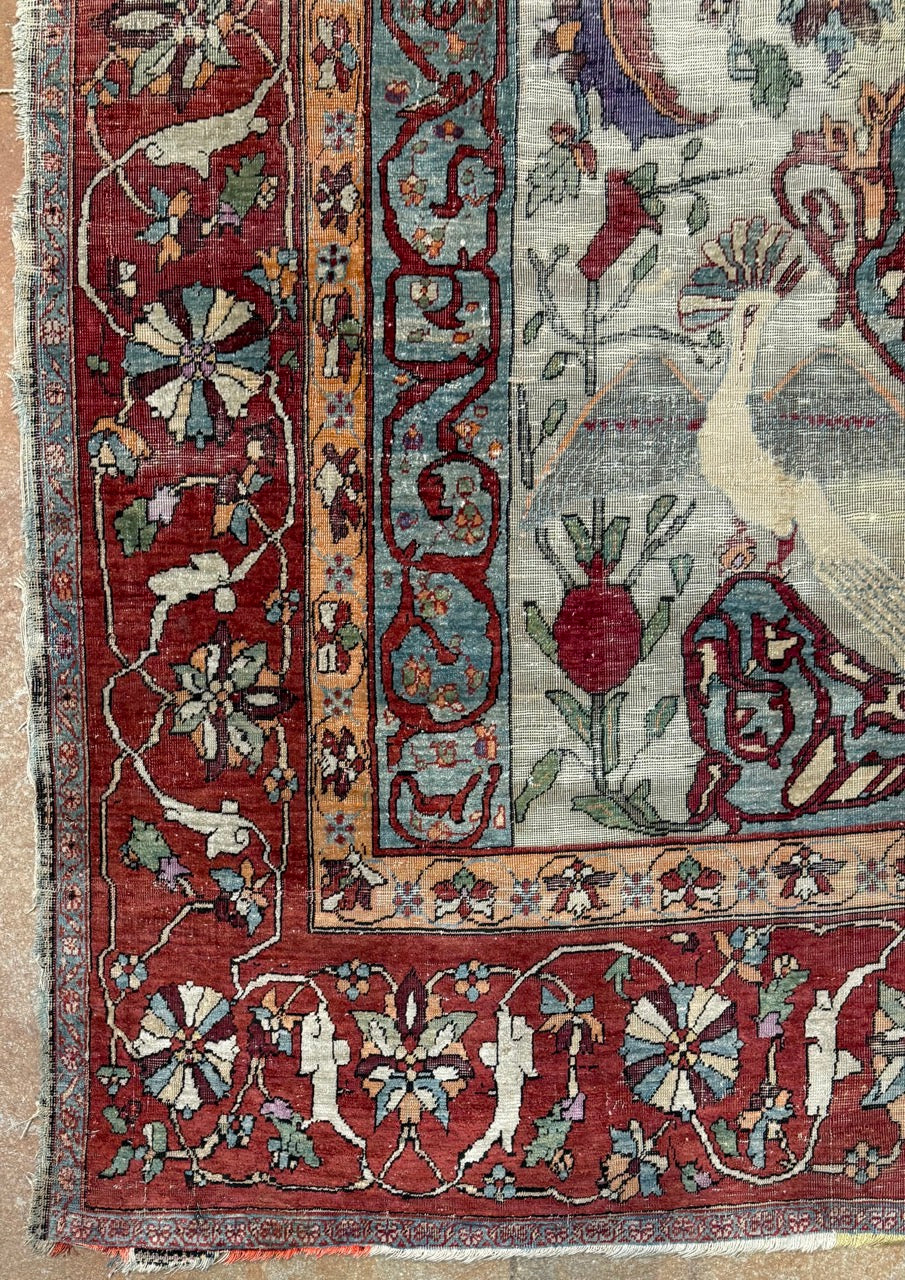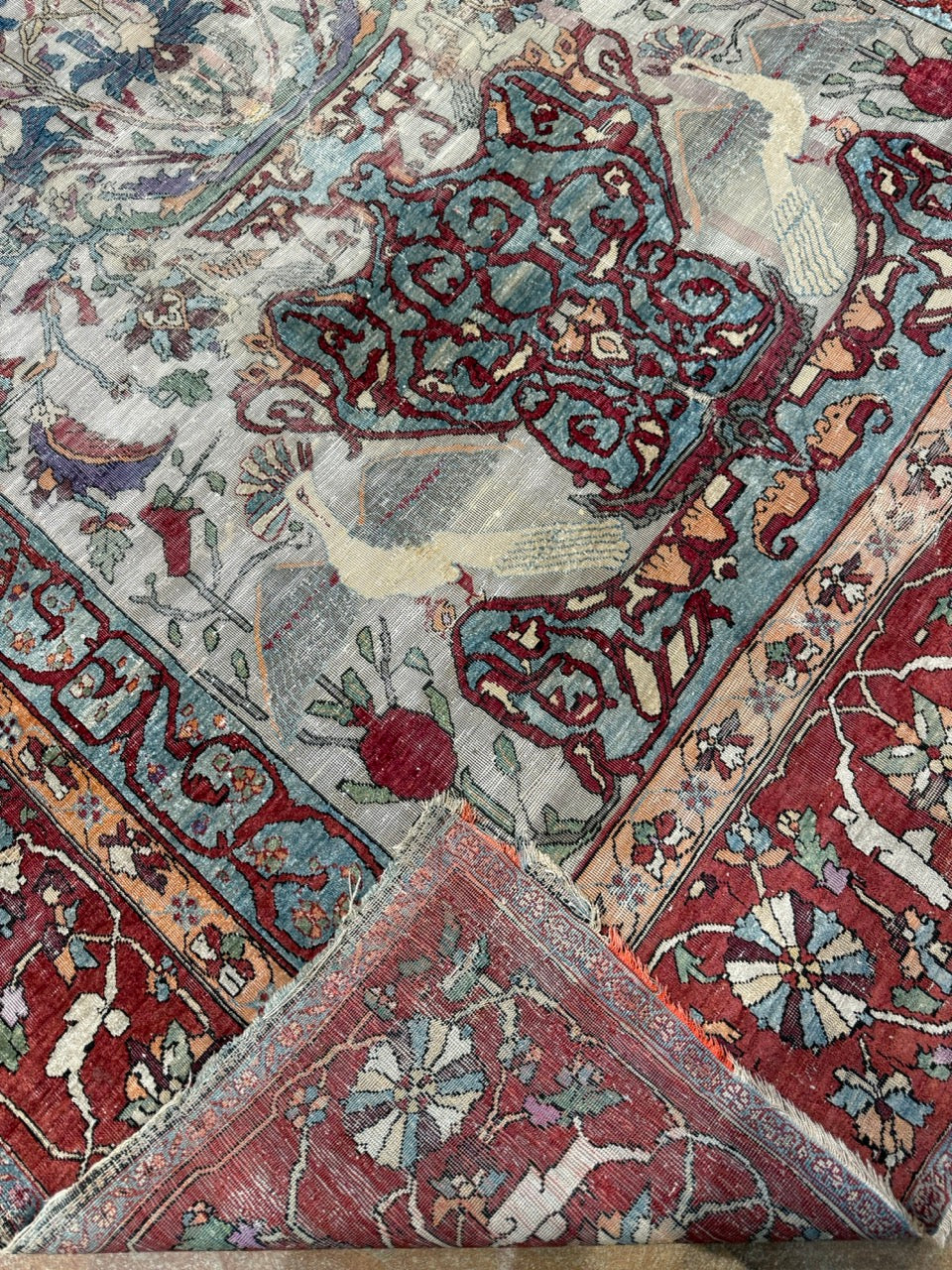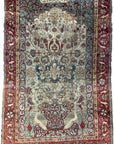

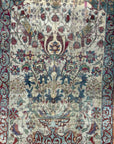
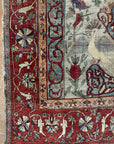
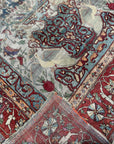
Rare early Persian Silk Kashan 25304
This rare early Persian silk rug (6'8" × 4'2") is an extraordinary piece of weaving history, likely woven in Kashan between the 1750s and early 1800s. The cartouche at the top bears an inscription reading “to the order of Horgol Amir Ibrahim Touik,” signifying that this rug was a special commission for a prominent patron. Such inscribed silk rugs from Kashan are exceptionally scarce and highly prized by collectors and museums alike.
The design centers on a monumental vase-and-Tree of Life composition, a classical Persian symbol of abundance, renewal, and paradise. A large, intricately drawn vase overflows with flowering branches, pomegranates, and stylized blossoms, while birds and peacocks are interwoven throughout the field, representing immortality and guardianship. The color palette — now softened with age — retains elegant shades of aqua blue, crimson, ivory, and plum. The floral borders, populated with vine-scrolls and smaller birds, frame the composition with harmony and refinement.
Entirely handwoven in silk, this rug is not just a decorative textile but a courtly artwork — a fusion of Persian symbolism, poetry, and technical mastery. Its rarity, silk construction, and named dedication make it a museum-worthy masterpiece and a true collector’s treasure.

